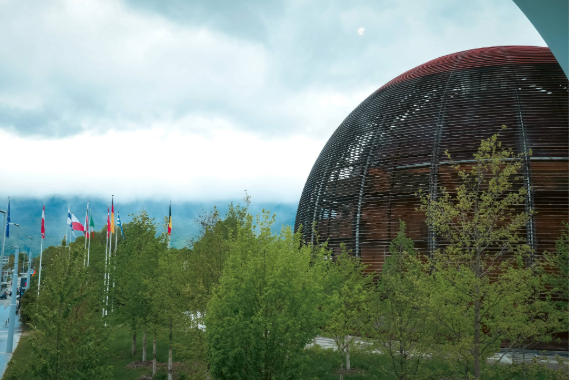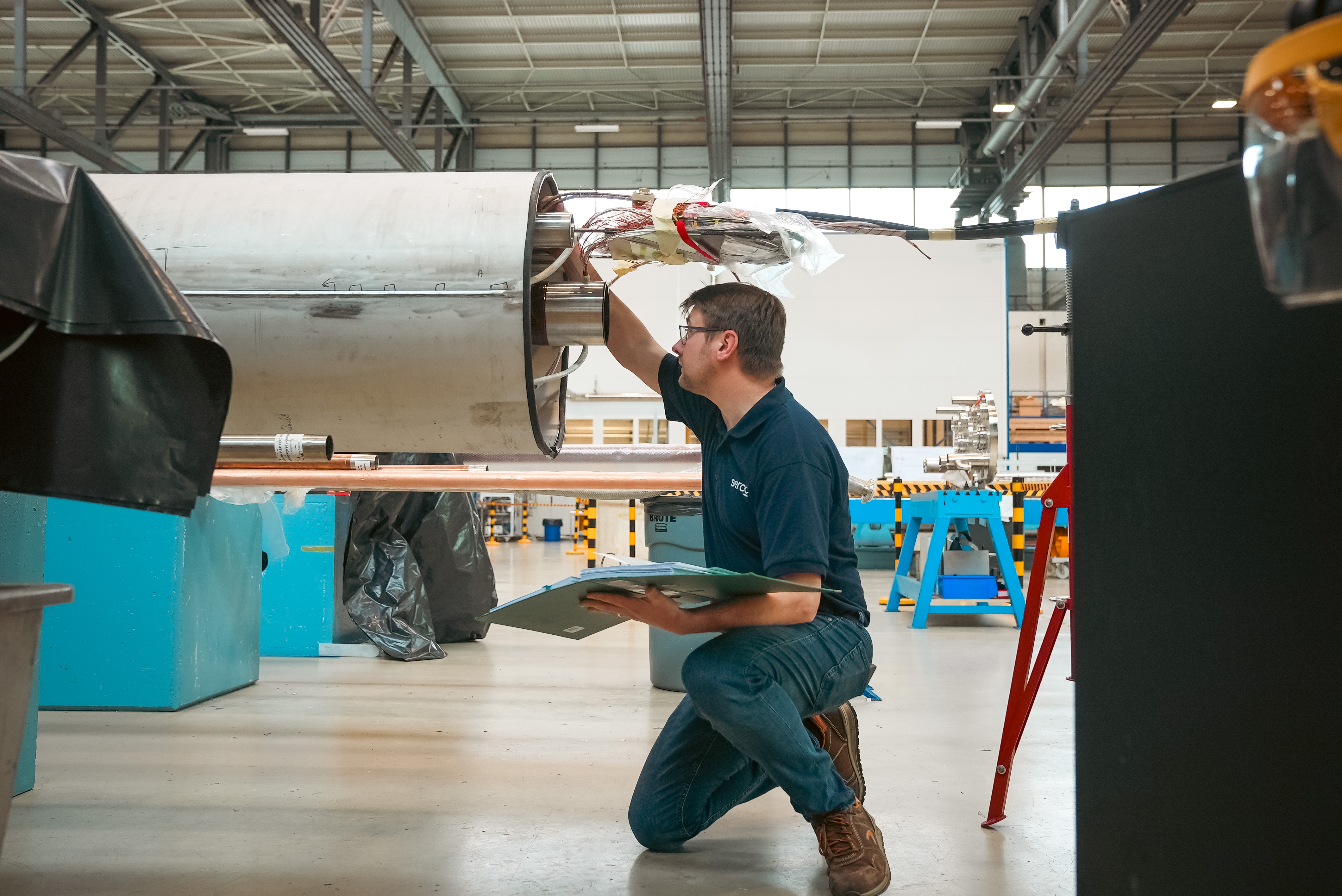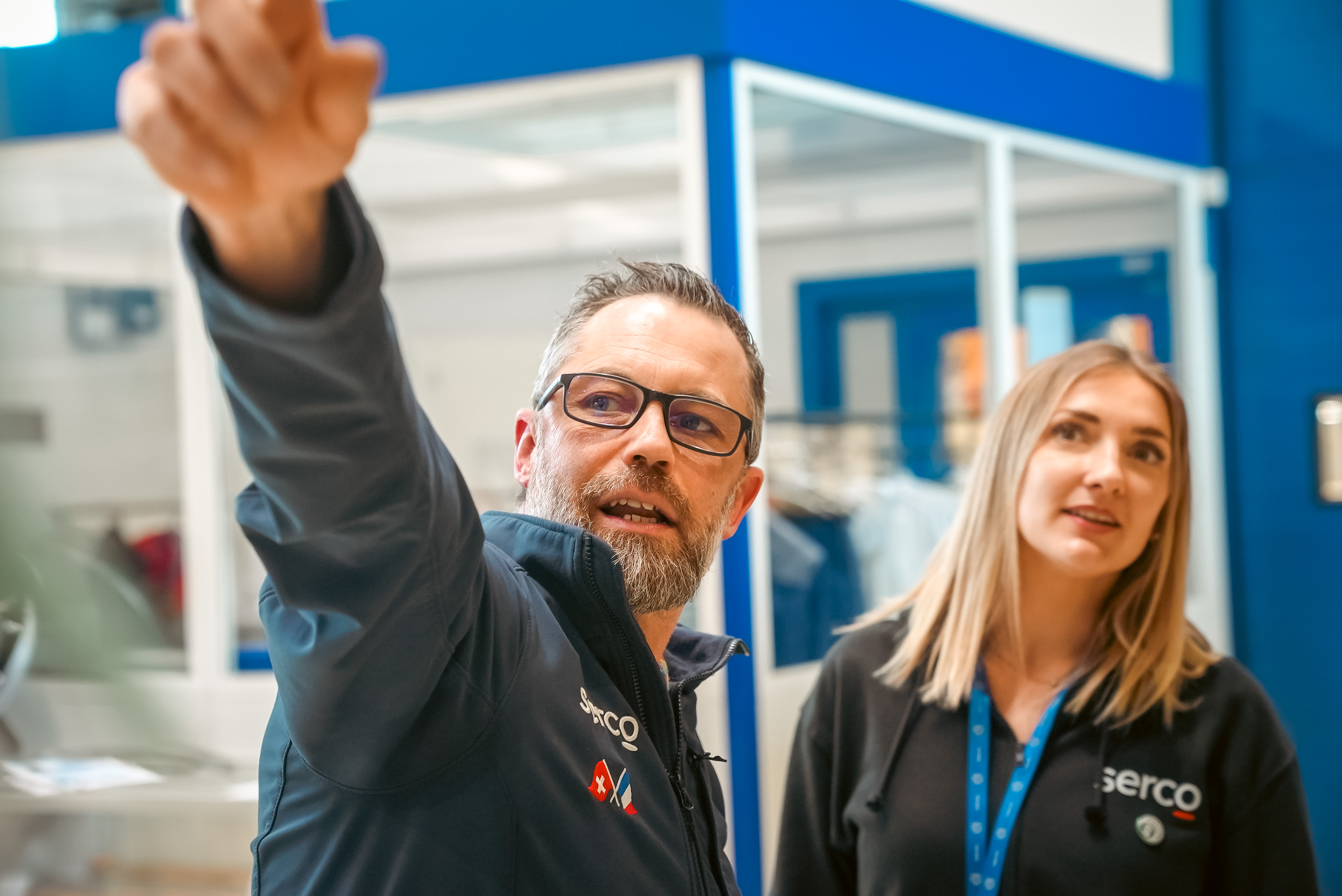
Julien Rigot's Story
Keeping the World’s Largest Machine Running: A Conversation with Julien Rigot of Serco at CERN
Card text
Tucked between the Jura mountains and the Alps, on the Franco–Swiss border, the European Laboratory for Particle Physics – more widely known as CERN – operates on a scale few organisations can match. Home to the world’s largest and most powerful particle accelerator, the Large Hadron Collider (LHC), CERN is where some of the most complex questions in physics are being pursued with some of the most advanced machinery on the planet.
Every few years, the LHC is brought to a full stop for a carefully planned programme of maintenance, upgrades and infrastructure renewal. Known as a Long Shutdown, this intervention is essential to ensure the collider continues to operate safely and effectively. The next, referred to as Long Shutdown 3 (LS3), will begin in mid-2026 and is scheduled to last three years. It will be one of the most ambitious technical undertakings in the facility’s history.
To understand what lies ahead, I spoke with Julien Rigot, Serco’s Operations Director at CERN. His teams, spread across several operational contracts on site, are already deep into the planning.
To understand what lies ahead, I spoke with Julien Rigot, Serco’s Operations Director at CERN. His teams, spread across several operational contracts on site, are already deep into the planning.
Heading

Understanding the Shutdown
“The Long Shutdown is a planned and necessary pause,” says Julien Rigot. “It allows CERN to carry out critical renovation and upgrade works on the LHC and associated infrastructure.”
The scope of LS3 is considerable. Dozens of superconducting magnets, which guide high-energy particles around the collider’s 27-kilometre ring, are due for replacement. Two entirely new technical installations are being constructed to improve the machine’s performance. Before any of this can begin, the accelerator must be brought up from its operating temperature of –271°C. Warming it will take three months. Cooling it back down once work is complete will take six.
During the shutdown, over 6,000 work orders will be processed, including some 75,000 hours of cryogenic maintenance. More than 1,200 spare parts orders will be placed, and the entire cryogenic compression system will be dismantled and shipped off site for servicing. It is, as Julien Rigot puts it, “open-heart surgery on one of the most complex machines ever built”.
The scope of LS3 is considerable. Dozens of superconducting magnets, which guide high-energy particles around the collider’s 27-kilometre ring, are due for replacement. Two entirely new technical installations are being constructed to improve the machine’s performance. Before any of this can begin, the accelerator must be brought up from its operating temperature of –271°C. Warming it will take three months. Cooling it back down once work is complete will take six.
During the shutdown, over 6,000 work orders will be processed, including some 75,000 hours of cryogenic maintenance. More than 1,200 spare parts orders will be placed, and the entire cryogenic compression system will be dismantled and shipped off site for servicing. It is, as Julien Rigot puts it, “open-heart surgery on one of the most complex machines ever built”.
A sense of mutual respect and mindfulness permeates our culture-in fact, it’s the key to our success.
Heading
The Hidden Infrastructure
Alongside the physics, a vast logistical operation is required. Serco’s logistics team is responsible for supporting CERN’s storage, inventory and movement of materials across the campus. This work intensifies significantly during a shutdown.
“Activity levels will triple during LS3,” Julien Rigot explains. “We’ll be handling components that are over 25 metres long, weighing several dozen tonnes, with a unit value sometimes exceeding €3 million.”
To prepare, Serco has been working with CERN to reorganise storage areas, retire obsolete stock and create space for incoming equipment. Additional storage zones have been planned to cope with the increased volume. At the same time, teams are auditing existing equipment, forecasting demand and identifying priorities for delivery and installation.
“Activity levels will triple during LS3,” Julien Rigot explains. “We’ll be handling components that are over 25 metres long, weighing several dozen tonnes, with a unit value sometimes exceeding €3 million.”
To prepare, Serco has been working with CERN to reorganise storage areas, retire obsolete stock and create space for incoming equipment. Additional storage zones have been planned to cope with the increased volume. At the same time, teams are auditing existing equipment, forecasting demand and identifying priorities for delivery and installation.

A sense of mutual respect and mindfulness permeates our culture-in fact, it’s the key to our success.
Card text
"We are coordinating best practice sessions between contracts, combining what has worked in the past with what needs to be adapted. We are also introducing Lean approaches where appropriate to help streamline delivery."
Julien Rigot
Operations Director, Serco at CERN
Operations Director, Serco at CERN
Card text
A Collective and Complex Effort
Serco is involved in multiple operational contracts at CERN, and all will play a role in LS3. “All of our contracts will be engaged in some way,” Julien Rigot notes, “but our cryogenic support contract will be particularly impacted in terms of recruitment.”
“This shutdown will be a joint effort between CERN personnel, Serco, and other external service providers,” he adds.
With a three-year timeline and multiple dependencies, planning is a priority. Serco teams are identifying task groupings, mapping the critical path and forecasting workforce requirements across the entire period. “We must anticipate peaks in demand, ensure resource availability and respond to changes without compromising safety or delivery,” Julien Rigot explains.
Planning will also determine procurement schedules and inventory flows. “The aim is to avoid stock shortages, delays or safety risks – all while remaining flexible.”
Unforeseen issues are expected. “The shutdown schedule has already shifted several times,” he adds. “We need to be able to adjust.”
“This shutdown will be a joint effort between CERN personnel, Serco, and other external service providers,” he adds.
With a three-year timeline and multiple dependencies, planning is a priority. Serco teams are identifying task groupings, mapping the critical path and forecasting workforce requirements across the entire period. “We must anticipate peaks in demand, ensure resource availability and respond to changes without compromising safety or delivery,” Julien Rigot explains.
Planning will also determine procurement schedules and inventory flows. “The aim is to avoid stock shortages, delays or safety risks – all while remaining flexible.”
Unforeseen issues are expected. “The shutdown schedule has already shifted several times,” he adds. “We need to be able to adjust.”
Heading

Learning from Experience
While this will be the first Long Shutdown for Serco’s logistics contract, other Serco teams on site are no strangers to the challenge. Technical contracts such as cryogenic support and technical services have already supported two previous shutdowns and are now sharing their experience to help ensure LS3 runs smoothly across all activities.
“We’re coordinating best practice sessions between contracts, combining what’s worked in the past with what needs to be adapted for LS3,” says Julien Rigot. “We’re also introducing Lean approaches and operational excellence initiatives where appropriate, to help streamline delivery and support cross-team alignment.”
The aim is to apply lessons learned, enhance resilience, and ensure all parts of the operation are working in harmony with CERN’s expectations and priorities.
With a focus on serving governments globally, Serco’s services span justice, immigration, defence, space, citizen services, health, and transport.
“We’re coordinating best practice sessions between contracts, combining what’s worked in the past with what needs to be adapted for LS3,” says Julien Rigot. “We’re also introducing Lean approaches and operational excellence initiatives where appropriate, to help streamline delivery and support cross-team alignment.”
The aim is to apply lessons learned, enhance resilience, and ensure all parts of the operation are working in harmony with CERN’s expectations and priorities.
With a focus on serving governments globally, Serco’s services span justice, immigration, defence, space, citizen services, health, and transport.
A sense of mutual respect and mindfulness permeates our culture-in fact, it’s the key to our success.
Card text
A Long-Term Partnership
Serco has worked alongside CERN for over 30 years, delivering services in areas ranging from IT and cryogenics to logistics and training. This continuity has allowed the company to build deep operational insight into CERN’s unique environment.
“Our strength lies in our ability to adapt,” says Julien Rigot. “We provide tailored solutions and consistent delivery in an extremely complex setting.”
With all current contracts set to continue through the LS3 period, Serco is well placed to ensure CERN’s operations remain supported throughout. CERN’s primary mission is to study the fundamental particles of the universe, but those research depend on engineering, planning and cooperation on a very human scale. As the LHC prepares for its most extensive upgrade to date, the collaboration between physicists, engineers and technicians is more important than ever.
The world’s most advanced machine cannot run without the people who know how to take it apart, upgrade it and put it all back together again.
“Our strength lies in our ability to adapt,” says Julien Rigot. “We provide tailored solutions and consistent delivery in an extremely complex setting.”
With all current contracts set to continue through the LS3 period, Serco is well placed to ensure CERN’s operations remain supported throughout. CERN’s primary mission is to study the fundamental particles of the universe, but those research depend on engineering, planning and cooperation on a very human scale. As the LHC prepares for its most extensive upgrade to date, the collaboration between physicists, engineers and technicians is more important than ever.
The world’s most advanced machine cannot run without the people who know how to take it apart, upgrade it and put it all back together again.
